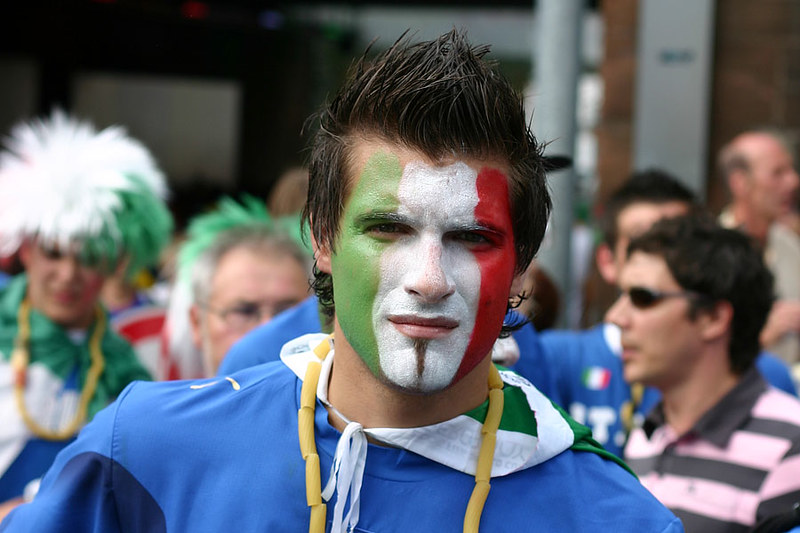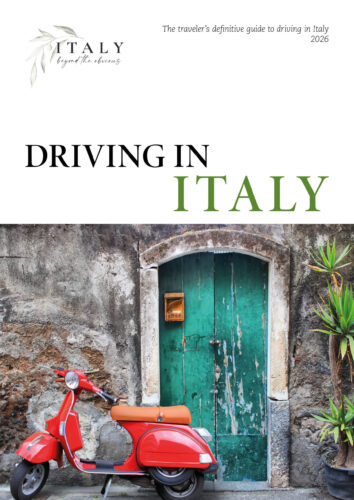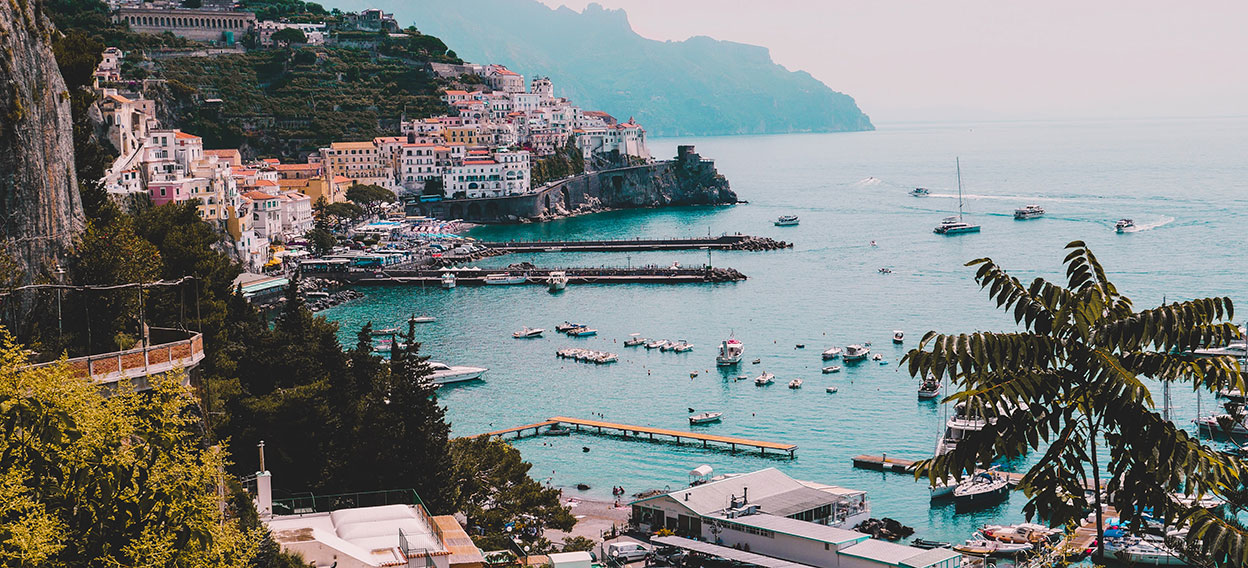Italian soccer for the traveler
Point me to a pair of skis, hiking boots, a bike – or even a sports bar with a hockey game on – and I’m happily occupied for hours. But I am soccer-challenged, so thanks to Jessica Spiegel of JessicaTravels.com, for the guest post below about Italian soccer for the traveler.

Photo by Nazionale Calcio via Flickr, licensed under CC BY 2.0
When we travel, it’s fun to try new things in the places we visit – things we might not be terribly interested in back home. For some that might be a new food, for others it might be an activity like biking or surfing. But have you ever thought about going to a local sporting event when you travel? In Italy, calcio – the sport known as soccer in some parts of the world, football in other parts – is something like a religion to many people. You don’t have to be a huge sports fan to get some cultural enjoyment out of going to a soccer game in Italy either, although you do need to know a few things about going to a match before you show up at the stadium.
There are Several Italian Soccer Leagues
The top level of Italian soccer is called the Serie A, and there are 20 teams in that league – but there are lower levels as well so that nearly every city and town in Italy has a home team. If you’re a sports fan who has even a little familiarity with soccer, you might want to seek out games in the cities that have one of the 20 teams in Serie A to see the best players in the country (and, in some cases, in the world). If you’re just interested in seeing a soccer game and don’t really care about (or know) any of the players, any league will do. And in fact, going to a lower level game will give you more of a chance to hang out with locals, because foreigners are less inclined to go to games that aren’t in the Serie A. (The lower level games are cheaper, too.) The teams in each league change every season, so although there are a few teams that are pretty much always in the same league it’s a good idea to check a list of that season’s teams in each league to see if your travel plans are taking you to any of those cities. I update my Italian soccer page each year with a list of the Serie A teams, including the cities and regions they’re in, and for the lower divisions I typically refer to Wikipedia. Here’s the Wikipedia page on Serie B, and the Wikipedia page listing all the Italian leagues. Click on any league to find out which teams/cities are in that league during the season you’ll be in Italy.
Italian Soccer Takes the Summer Off
Summer in Italy is the most popular travel time for most people, but that’s also the off-season for Italian soccer. If your trip falls in June-August, you won’t be seeing any Italian soccer games. If you’re lucky there might be a game involving the Italian national team – perhaps a World Cup or Euro Cup qualifier, or a friendly match – but league soccer is on its summer break. The Italian soccer season tends to run from late August (usually the last weekend of August) through late May, with a few weeks’ break over the Christmas holidays. Here’s my post about how to read an Italian soccer schedule, so you can cross-reference the dates of your trip with this year’s games.
Italian Soccer Games are Almost Always on Weekends
There are occasional games mid-week throughout the season, but the vast majority of Italian soccer games take place on Saturday and Sunday – and there are usually more on Sunday. The fact that Italy is home to Catholic HQ and that most games are on Sunday only backs up my assertion that soccer in Italy is more than a passion – it’s a religion. The lower divisions besides Serie A seem to have more midweek games, so that might be something to look at if you won’t be in a city with a Serie A team on a weekend.
Soccer Stadiums in Italy Aren’t Usually in the Town Center
Soccer games aren’t held in old Roman ampitheatres (although how cool would that be?), and the modern stadiums are typically built outside historic city centers where there’s room for a structure of that size. There’s usually decent public transportation that will get you close – if not directly to – each stadium, but it might be a bus line that isn’t much of a tourist line, and so may not be as well-marked as the routes that serve major attractions. The Offside is a soccer-related sister site to WhyGo Italy, and they’ve got a page full of information for anyone who wants to travel to Italy for Serie A games. You’ll find details about where the stadiums are, how to get there, and – if you’re only in town for a game – what hotels and hostels are nearby.

Photo by Tsutomu Takasu via Flickr, licensed under CC BY 2.0
You Need to Know How to Buy Tickets
Italians can buy tickets to games at official outlets like sponsor banks, but without an Italian zip code attached to your ID you won’t be able to follow suit. This means going you have to go to the stadium itself to buy tickets, and usually on game day a few hours before kick-off. >> A side note – You can buy tickets to many games in advance online, sometimes from the team’s official website and sometimes from soccer ticket brokers. The ticket brokers sometimes inflate the prices to such a degree that unless it’s a popular game that will sell out I’d recommend just waiting until you get to a place and buy the tickets on-site. The official team websites usually have reasonable enough prices, so if they make that option available it’s another one to consider. Two things that are important to know about buying tickets to an Italian soccer game are that you’ll need cash, and you’ll need a picture ID. The cash part probably isn’t too surprising to you, especially if you’ve traveled in Italy at all – it’s a very cash-based culture. But the picture ID part might seem a little odd. The good news is that they’re not trying to keep non-Italians out of games, so your passport or even your home driver’s license will do – as long as it’s a recognizable photograph of you and it’s got your name printed on it. They’ll print out a ticket with your name printed right on it, and you’ll present the ticket along with your ID to the guy at the gate so he can verify that you’re the person who should be going into the stadium. Italian soccer has a history of crowd violence, and this is one of the methods they started using some years ago to try to curb that. People can no longer buy tickets in bulk and hand them out to the worst of the ultrà fans (as the hooligans are known in Italy) if the name and the face always have to match. Of course they’ve found ways to skirt this, and there are still instances of violence among soccer fanatics, but it tends to be more outside the stadiums than inside. Which brings me to…
Italian Soccer Games are Safe (Enough)
You may have heard stories about soccer hooligans, or maybe you’ve seen images of a crowd at a game and thought, “Umm, maybe this isn’t something I can do without fear of getting injured.” I can’t lie and say that soccer violence in Italy no longer exists, and I will say this – it’s far less common than it once was, it generally happens outside the stadiums and not in the stands these days, and if you know how to behave you don’t really have anything to worry about. When I first went to a game at the San Siro in Milan – Italy’s largest stadium – I was nervous. I wouldn’t have gone on my own, but my husband was there and wanted to go as well. The game wasn’t a huge one, the stadium was more than half-empty, and when I looked around I noticed a few people had even brought their kids to the game. We had a great time, and felt not a hint of danger or fear going to the stadium, being there for the game, or leaving with the crowds at the end. Since then, I’ve gone to several more games at the San Siro – including one where I met a girlfriend out front to go in, and two where the stadium was packed to its 85,000 seat capacity. I’m personally not willing to sit in the curva – the end of the stadium where the hard-core supporters sit – but I don’t see many Italian women there, either. That’s a boys’ club, and if there’s going to be violence in the stadium that’s where it’s going to come from. If you avoid those sections, however, you’re fine. I also strongly advise you to root for the home team – unless your seat ends up being in the middle of a bunch of away team supporters. Basically, don’t be cheering wildly for the opposite team from the crowd you’re surrounded by. That’s bad form anywhere, and potentially dangerous if you don’t speak the language or know the customs. If you want to be really careful and not wear the opposing team’s colors by mistake, basic black never fails. I don’t say any of this to put fear in your heart if it wasn’t there already. As I said, I was nervous about my first game in a giant stadium, but now that I’ve done it I’d be perfectly comfortable going by myself. There might be some fierce rivalries where I’d be extra-careful to sit away from the curva and watch who I was cheering for, but I can’t think of a game I wouldn’t go to now. >> There’s an extensive article about the Stadio San Siro in Milan that I wrote for The Offside, including information about how to get tickets to games, that might be helpful to look over so you’re familiar with the process before you arrive at whatever stadium you’re going to. I also wrote an article about seeing a game at San Siro that’s my personal account of going to a game there.
About the Author: Jessica Spiegel can be found at JessicaTravels.com and wrote the Italy travel guide, WhyGo Italy, for BootsnAll, and is partway through the paperwork necessary to relocate to Italy. Connect with her on Twitter at @andiamo.



